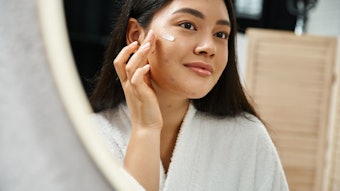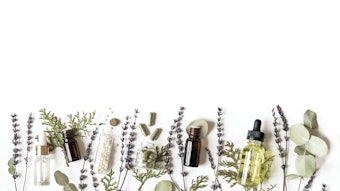
Editor's note:This article was originally published in the December 2010 issue of GCI magazine, and has been reprinted with permission. All rights reserved.
With consumers ever more likely to include social media as a tool for their product purchasing decisions, spas need to evolve from simply maintaining a social media presence to fostering dialogue. Social outbound engagement provides a new opportunity for spas to achieve the classic marketing goals of greater awareness, sales and customer loyalty with strong return on investment (ROI).
All major beauty brands today have digital marketing strategies in place, yet they are still not doing enough to keep up with consumers. Despite significant discussion regarding social marketing, there still has not been sufficient focus on delivering comprehensive social marketing strategies, leveraging its true word-of-mouth potential and tracking its ROI.
The percentage of time Americans are spending online has more than doubled during the past few years, while time spent on other communication channels has dropped or remained flat. People now spend more time online than engaged in any other media activity. Concurrent with the rapid increase in time spent online, there has been the recent dramatic rise of time spent on social media channels. Today, social networking is the No. 1 online activity, with people spending more than six and a half times the amount of time on social media as they do on Internet searches. And it’s not simply about quantity of time, it is also the degree of influence that social media possesses for consumers in their purchasing decisions. These trends are even more pronounced in the beauty industry, as women are even more likely to spend their time using online social media and refer to it when deciding which products they wish to buy.
Spas today need to evolve from simply maintaining a social media presence, to one of social outbound engagement, in which spas meet consumers on their terms—in a compelling, interactive manner. Following are the 10 best practices for successful social outbound engagement.
1. Recognize the need for separate social marketing strategies for your spa loyalists as well as independents (both of which will be defined later in this article).
2. Understand how your spa is represented in social media today, and how you could shape that to look tomorrow.
3. Prioritize social marketing efforts to ensure you are maximizing your net impact.
4. Engage your target clients through your social marketing strategy to facilitate discussion with, and among, that target.
5. Leverage constructive feedback to improve your products and services, as well as the perception of your spa among influential social channels.
6. Develop consumer brand ambassadors who can speak to independent consumers who are primarily interested in the opinion of other consumers in formal and informal online channels in which your brand might not have a presence.
7. Design your social marketing strategy to create a strong ripple effect to reap the benefits of positive online word-of-mouth.
8. Align your marketing resources based on what truly influences client spending behavior.
9. Integrate your social marketing program with both your traditional and other online programs to ensure a cohesive and compelling customer experience.
10. Measure and deliver ROI through clear metrics to track and enhance your social marketing efforts.
Through a comprehensive social marketing strategy employing these 10 best practices, spas can cost-effectively realize significant improvements in awareness, spend and client loyalty. The brands that catch up with consumers through social media will be the ones to reap the maximum ROI through the positive word-of-mouth they will achieve.
Social media and the American consumer
Sure, social marketing is being talked about a lot these days, but just how relevant is it for the spa industry? Although there are a few anecdotes that hint at its potential for success, is it something that can be effectively integrated into a comprehensive marketing strategy, and measured to prove high ROI?
The answer? Yes.
Originally perceived to be something used only by high school and college students to stay in touch with each other, it has since turned into the most influential marketing channel available.
Many spas today recognize that the Internet represents an important marketing channel, and have varying degrees of digital marketing strategies in place. However, most still underestimate just how central a role online media plays in consumers’ lives and in their buying decisions. Consumer behavior has changed dramatically in the past 10 years, and beauty companies need to catch up. A study by Forrester found that, from 2004–2009, Americans increased the amount of time they spent online by 117%, while time spent watching TV, listening to the radio, and reading newspapers and magazines decreased or stayed flat.1 (See Figure 1.)
In other words, use of the Internet has more than doubled, while time spent using the other major media has remained flat or shrunk in the same five-year period. Although this is impressive, what is the base, and how many hours are you actually talking about today? A recent Heishman-Fillard and Harris Interactive report finds that Americans are now spending more time online than engaging in any other media.
Figure 2 notes the average number of hours U.S. consumers spend in each media per week.
It’s not just quantity of time that is important; it is also quality. And the Internet is playing a tremendously influential role in the lives of consumers. In fact, 64% more Americans now regard the Internet as an “absolutely essential” or “extremely important” source of information, when compared to TV.* In short, the study found that the Internet has twice the influence of TV and 10 times the influence of print media on consumers.2
The transition of how beauty consumers are spending their time has not just occurred from traditional media toward online. Within online as well there has been a seismic shift over the past few years: social media.
Social media really is nothing more than word-of-mouth, online. My Facebook post, your Tweet. I StumbleUpon, you Yelp. YouTube, Wikipedia … show and tell, word-of-mouth, 2010-style. The corporate hope has always been that if consumers have good experiences with your products or services, they tell all of their friends. If they have a bad experience, they just tell you. Clients do not always act as you might wish. In the social media reality of 2010, the reach and impact of word-of-mouth is exponentially greater today than ever before.
Some numbers:
Americans spend more time today on social networks than any other activity online; 906 million hours, in fact, are devoted to social networks and blogs by Americans per month, more than twice that of any other category. That’s more than six and a half times the amount of time they spend on Internet search.
• Americans are spending 43% more time on social networks today than just a year ago.3
• Nearly two-thirds (66%) of online Americans, according to a 2010 report, visit social networking sites, up 230% from 20% two years prior to the study.4
• The average Facebook user spent six hours and three minutes on Facebook in June 2010, nearly three times or more than the time spent by any other audience of another top 10 website.5
The numbers are impressive, but still don’t convey the entire impact or implications of social media for the spa industry.
Further, numerous studies have shown that women are more likely to spend time on social networking sites than men. An Edison Research report, for example, found that women comprised 57% of all consumers who checked social networking sites multiple times a day.6 And it’s not just the amount of time, but the degree of influence social media carries in the buying decisions of American beauty consumers. Consumers have shown that they are more likely to accept the opinions of friends, family and even other consumers online (who they may not even know) over the opinions of spas themselves, as expressed on spa websites and other marketing channels.7 Reading community message boards, general interest websites and blog reviews have been shown to make women more favorable to a product when shopping, compared to brand websites.8 And a report issued by Gartner in July 2010 found that the majority of consumers rely on social networks to guide their purchase decisions.9
Social media, simply put, is the most engaging channel available to consumers today. From a promotion code for an exfoliating scrub announced on a blog to a foundation blending tip shared on an online beauty forum; from a video testimonial on a new mascara by your cousin in Ohio to a friend’s Facebook post about a sunless tanner she likes, social media is empowering consumers to choose when and how to learn about brands, and infiltrates every step of their purchasing decisions. Social media is the dominant player on the Internet today, and its usage and impact has been skyrocketing. The spa that learns how to swim best with the social media current will be the one to maximize the tremendous ROI it has to offer.
Social marketing and spas today
All of the studies previously cited lead to two conclusions:
1. American beauty consumers are spending much more time online and on social media sites than ever before.
2. Social media has become a dominant influential channel that impacts consumers buying behavior.
Of course, establishing a brand presence on Facebook and Twitter is just the first step as far as social marketing is concerned. Let’s call it Social Marketing 1.0. And although there has been some anecdotal success of effective social marketing within the spa industry, there has not been widespread adoption of a comprehensive social marketing strategy tied in sufficiently to ROI. Just as spas have progressed from traditional to online marketing, establishing websites, incorporating e-mail into their customer relationship management (CRM) systems and providing e-commerce capabilities, so too do they need to evolve to the next stage of social marketing: Social Marketing 2.0.
What is Social Marketing 2.0 for the spa industry? In a phrase, it’s social outbound engagement. It’s more than simply achieving an arbitrary fan base or specified number of posts by year’s end. It’s comprehensive marketing designed to foster dialogue with—and among—your loyal clients of today and your loyal clients of tomorrow. It’s reaching out beyond your official channels; it’s reaching through communities and influential players in the online landscape of today. It’s integrating social marketing with your online and traditional marketing efforts, and utilizing metrics that culminate in high ROI. It’s adhering to the 10 best practices for social marketing.
Best practices for social outbound engagement for the beauty industry
1. Think for two
The first step for an effective social outbound engagement strategy is to recognize that you have two broad consumer groups, each of which necessitates its own strategy to effectively leverage social media.
Loyalists: These are your VIPs whose frequency and amount of spend make them your most profitable customers today. They are the people who are easiest to engage through your brand’s proprietary online and social media channels. They are the ones who are already on your e-mail lists, reading your blogs and following your Facebook updates—or at least identify strongly enough with your brand to want to stay informed.
So, how many of your loyalists do you actually track? What can you do to get more information about those you do not know? How do you leverage your social media assets to further engender their loyalty?
Independents: These clients might do business with your spa on occasion, but also spend with your competition. Or perhaps they have never made an appointment, but have challenges that your products and services address. They have the potential to become profitable, long-term clients of yours, but how do you reach them? They are much less likely than loyalists to be on your customer lists or fan groups, but yet they are still active online.
The total spend of independents in your product categories far exceeds that of the loyalists, which you are realizing today, so you need to court this group. However, to do so requires you to meet them where they are already spending their time online, because they are not interested in visiting you on your online social properties ... yet.
2. Know your social shadow
You can’t develop an outbound engagement strategy unless you know where you are starting. Establish metrics and survey the most relevant social media sites for your business. To shape how your brand is represented in social media tomorrow, you need to know where you are today: How many mentions of your spa are there in social media? Who is talking about you? What are they saying? What percentage of the discussion is positive, neutral and negative? How many inbound links and bookmarks to your sites are there?
Now that you know how your spa is represented, it is important to understand who else is influential in online social media for spa consumers but is not referencing your brand. How is each of your competitors being referenced today in social media? By whom? How about complementary products or general beauty issues that your products and services address?
A comprehensive examination of the relevant social universe will enable you to understand what your potential online social reach could be, relative to what it is today.
An effective social marketing program should both increase the number of people discussing and engaged with your spa, as well as increase the overall positive references to your spa in social media. By realizing both of those objectives, the ultimate goal of marketing can be achieved: tracking and producing incremental revenue with demonstrated high ROI.
3. Prioritize
In an ideal world, a spa would address every relevant customer and commenter in all social media channels. However, this is not possible given the limited bandwidth. It is critical in social marketing, as in all marketing, to prioritize based on what will deliver the best results for a given amount of resources. Who reaches the most influential people? Who inspires conversation and engagement? Just as not all customers are as profitable as others, not all social media channels are as influential as others. So, how can you gain an audience with the most influential and insightful consumers? Who will enable you to create the greatest impact through a comprehensive social marketing program?
4. Engage
Some brands still treat their initial forays into social marketing with the same approach as classic marketing channels: The brand talks, the customer listens. Social marketing enables a true dialogue between current consumers, prospective consumers and spas in a way not possible before.
What can you do to foster participation and dialogue about your products and services, about the solutions you are providing? Are there conversations regarding your spa and issues taking place in which you can join and add value? Can you provide access to your experts to discuss beauty issues and best practices, and share overall insight through interactive formats? Can you develop social media content that engages consumers and motivates them to share your assets with their friends and family?
Are the social media resources you are creating that would legitimately be of interest to someone who is not yet a loyalist of yours? Engagement is essential for engendering true loyalty among your target audience. Does your current social marketing strategy sufficiently address this?
5. Leverage the negative
One of the more challenging elements of social media for spas is that, with so many different voices in social media, it is inevitable that some might be more negative in their appraisal of your products, services or overall brand. Of the negative references, it is important to identify those that are constructive in nature and those that have a greater online impact. For these, look to remedy the situation through the following methods.
Direct assistance to address the issues they raise.
Validation by regarding their feedback as constructive and valuable. Indicate, specifically, how you will leverage it into your marketing and product and service development process.
Incremental services you can provide to enable them to have a positive association with your spa.
By creating a positive experience where there was a negative void, you are creating a social impact far greater than that one individual. Other online consumers notice when someone they trust has changed their opinion of your brand, and, in addition, it motivates them to reconsider your spa in a more positive light.
6. Cultivate brand ambassadors
Consumers have been shown to be more likely to trust the opinions of other online consumers over those of a company whose products and services they are considering purchasing. The more these people encounter real customers who are passionate about your spa, while still retaining that girl-next-door ring of truth to which they can relate, the greater the chances are that they will go ahead and try your spa.
By developing an environment and support system that cultivates and empowers these consumer brand ambassadors, you will be able to multiply the impact of your social marketing efforts. These are the people who will speak on your behalf through blogs, communities and in direct response to their friends’ posts to share their experience with your product. The spa industry has some of the most passionate and vocal consumers of all. Are you leveraging them? Have you identified who could become your greatest brand ambassadors? What are their demographics, purchasing behaviors and issues? Which of your current client loyalists has a very large online presence and social influence? Who are some of the most influential and credible beauty consumers today whose demographics and activity indicate their potential to be a great fit for your spa, even if they are not yet a current loyalist of yours?
Motivate and enable them to feel even more a part of your brand, and speak on your behalf. Consider product samples, application tips and direct access to some of your experts to ensure that any of their questions are addressed. Is there any technical support they might require to communicate with other spa consumers through pictures, video or online access that you can provide? What additional support, resources or incentives might there be to further motivate them to represent your spa well, and feel that they are recognized and appreciated for doing so?
7. Turn online social ripples into waves
One of the greatest powers of social marketing is the multiplier effect. Social media is word-of-mouth, online—so develop your social outbound engagement strategy to maximize its ripple effect. There are three key factors that determine how much of a ripple you can create from your initial efforts.
Create content of significant value and interest. Content is paramount online, so whether through insightful expertise, exclusivity, games, humor or other means, develop compelling social media content.
Seed the idea with the most engaged and passionate key online influencers.
Motivate the sharing. Have you developed content in a format that makes it simple and quick for anyone to pass along to a friend? Is the content as compelling as it can be to encourage sharing? Can you develop incentives to further promote the ripple effect?
8. Align your marketing resources
Have you allocated your marketing resources to maximize your net impact? Are you placing the appropriate weight on each marketing channel given how your customers are actually learning about your products and services and making their purchasing decisions?
A Duke University and American Marketing Association survey found that business-to-consumer product chief marketing officers, on average, will allocate 12.4% of their marketing budget toward social media in the next 12 months, and plan to increase that to 22.6% in the next five years.10 What is the best allocation for your spa and your target audience?
9. Integrate
The best social outbound engagement strategy is the seamless one. Whether you are speaking through an influential online community forum to someone who has never seriously considered purchasing your product before or to a loyalist who you wish to invite to an exclusive event, you want to ensure you deliver a consistent, cohesive brand experience for your audience.
What are your brand values? Is there a disconnect between the social marketing voice you use through your Facebook presence to the print ad in The New York Times announcing your newest treatment? Is your social marketing strategy leveraging your traditional marketing assets and events? Do you have a comprehensive marketing calendar that captures all your social, online and traditional marketing touch points and events? Have you mapped out all possible customer journeys, and understand how each component smoothly leads to the next so that your audience has a seamless, positive brand experience?
10. Deliver the ROI
This all sounds nice, but we’re all busy, and, at the end of the day, need to show real, specific ROI. Can that be done for social media? Yes.
Some of the best methods available today to track ROI for your social marketing efforts include the following.
Compare number of impressions generated through social media with cost of delivering same impressions using traditional media.
Minimize customer service operational costs through outbound social engagement to retain disengaged clients. Evaluate with cost for in-person and phone support, noting your average cost for attracting a new client.
Track actual sales through promotion codes or custom URLs promoted through social media.
Boost online sales by measuring all traffic and revenue driven directly from clients who originated in social media channels.
Link names registered in your CRM system to those of your social media followers, including their preferred social media site(s) and user names. Motivate them to self-identify, and you can successfully capture both their immediate and long-term spend and attribute it to the correct marketing channels.
In conclusion
Social outbound engagement provides a new opportunity for spas to achieve the classic marketing goals of greater awareness, sales and customer loyalty with a strong ROI. Social media’s reach and impact have skyrocketed, to now represent the most influential channel available today. It’s time for spas to catch up with clients, and construct and deliver comprehensive social marketing strategies. Only then can spas cost-effectively realize the tremendous word-of-mouth potential, and the profits that will then ensue, through today’s online social media.
References
1. Forrester via North American Technographics Benchmark Surveys (2009)
2. Understanding the role of the Internet in the lives of consumers, Digital Influence Index, Heishman-Fillard and Harris Interactive (Jun 2010)
3. What Americans Do Online: Social Media and Games Dominate Activity, Nielsen (Aug 2010)
4. 2010 Social Networking Report, Experian Simmons
5. Top Online Sites and Brands in the US, Nielsen (Jun 2010)
6. The Social Habit—18th Edison Research/Arbitron Internet and Multimedia Research (Jun 2010)
7. Purchaser Influencer Survey, Expo, (Jan 2010) and Nielsen Trust and Advertising Global Report (Jul 2009)
8. Women and the Digital Path to Purchase, ivillage, shespeaks (May 2010)
9. User Survey Analysis: Consumer Marketing Using Social Network Analysis, Worldwide, Gartner (2010)
10. Duke University’s Fuqua School of Business, The CMO Survey commissioned by the American Marketing Association (AMA), B2C Products (Aug 2010)
Nate Myers is the vice president, strategic partnerships, for BeautyStat. In this role, he develops relationships with leading beauty brands and other trade partners, advising on comprehensive marketing, PR and research solutions that leverage BeautyStat social marketing expertise in reaching the overall online beauty consumer market. He has extensive business development and partnership marketing experience with American Express, Rapp Collins and Hewlett-Packard.
Ron Robinson is the founder and CEO of BeautyStat, a leading online interactive beauty community that connects consumers with each other and industry experts for unbiased advice. He is a 20-year product development executive who has worked for leading beauty companies, including The Estée Lauder Companies, Avon Products and Revlon Products. He has been a featured beauty expert for CBS News, the Los Angeles Times, WWD, and Self and Allure magazines.










